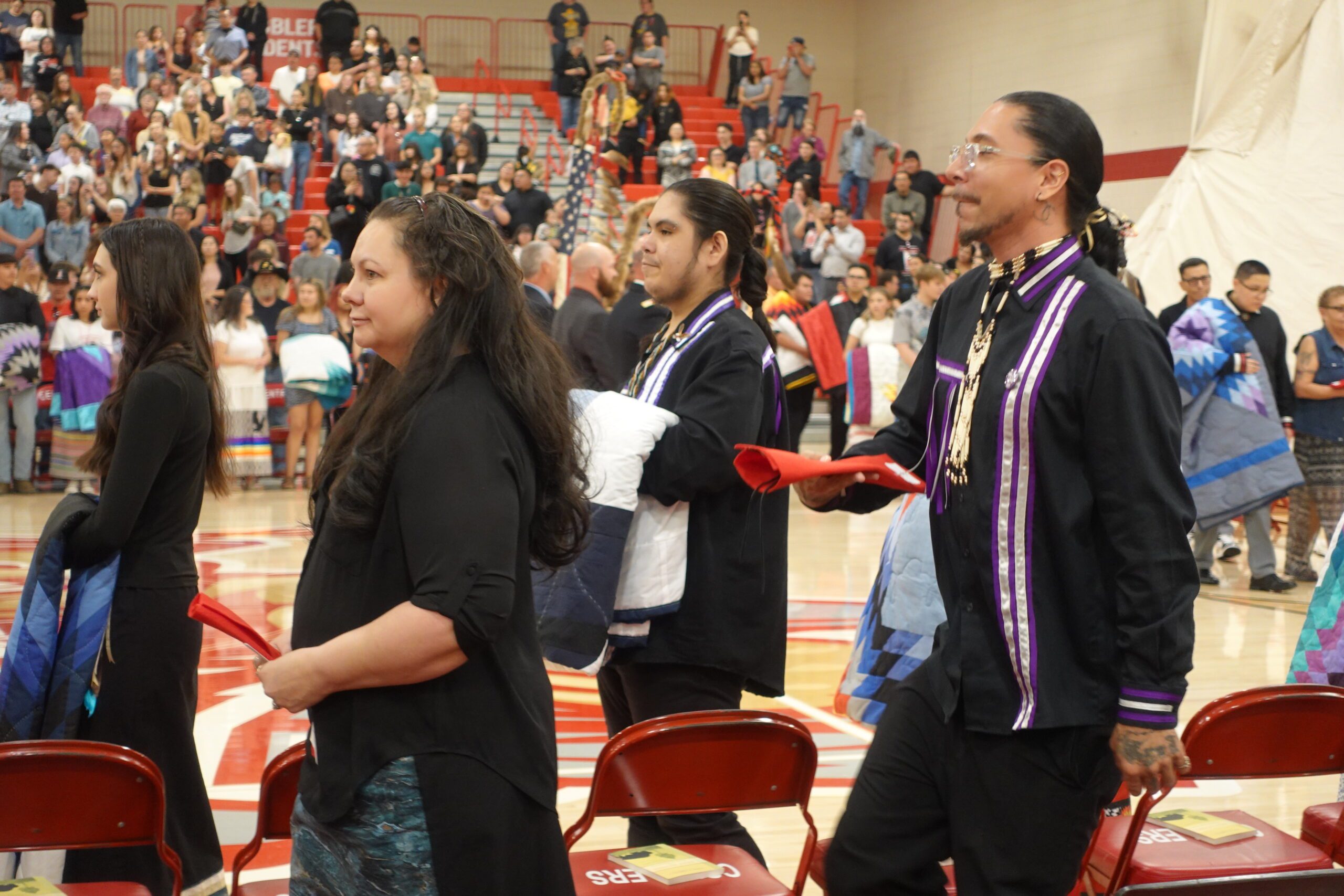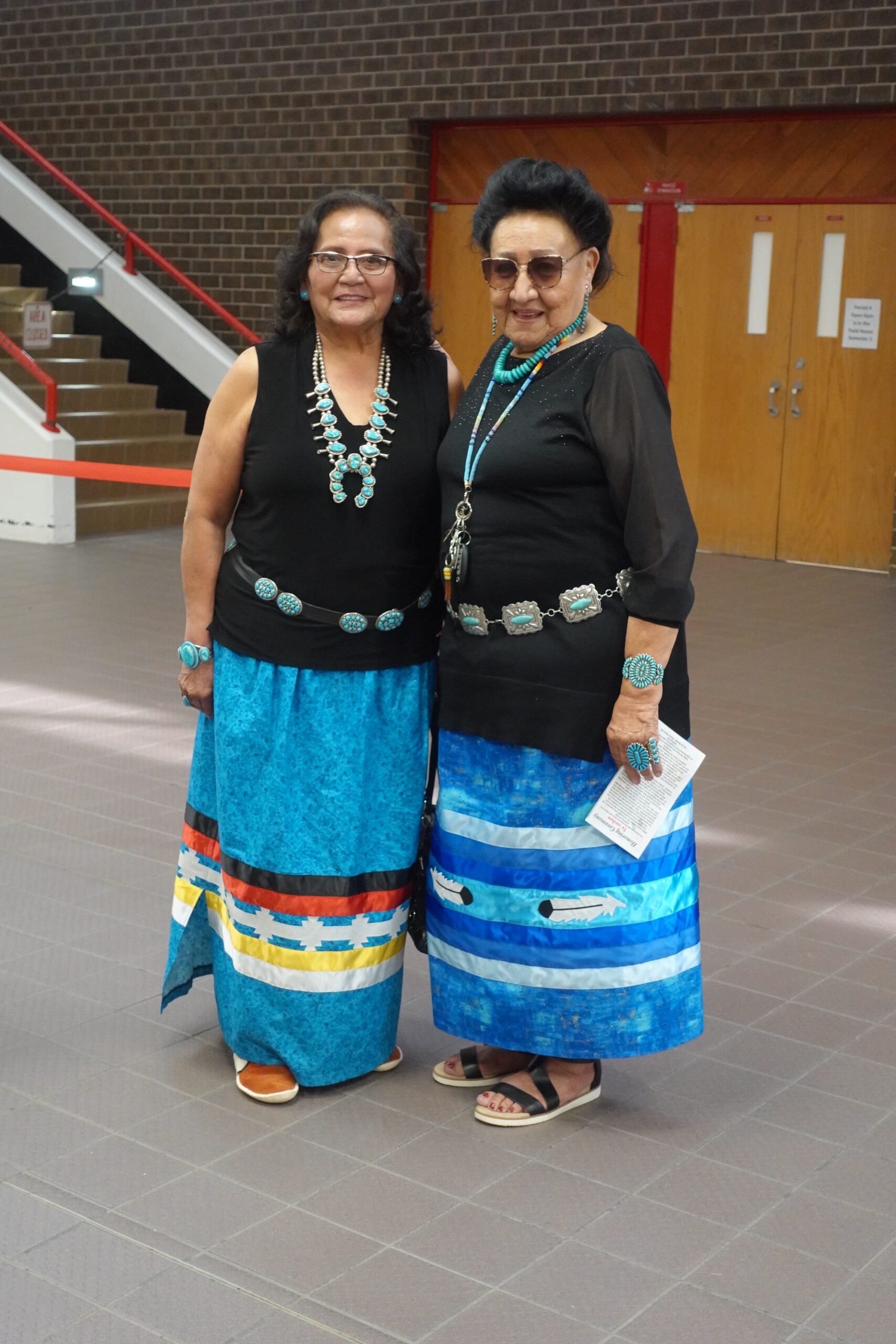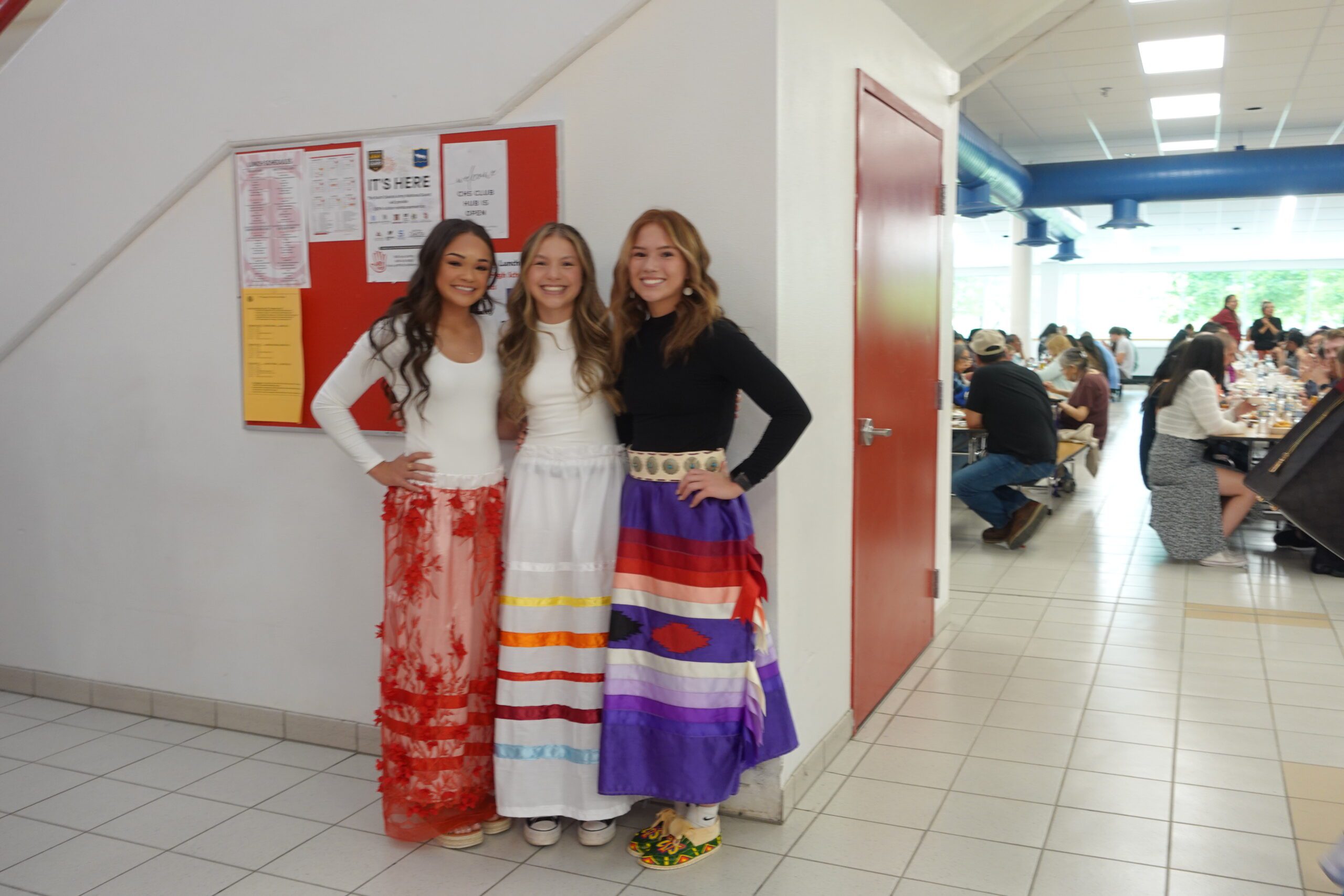Largest class of Native American students graduating
RAPID CITY — “The number of Native American graduates in the Class of 2024 will likely be the largest in the history of Rapid City Area Schools. For now.”
That is Ira Taken Alive, RCAS Title VI Manager, talking about this year’s graduates who were honored at the 2024 Senior Honoring Ceremony on Wednesday, May 22, 2024 at the Central High School Naasz Gym in Rapid City. The special event celebrates the achievements of the graduating Native American seniors from Central High School, Stevens High School, Rapid City Alternative Academy and Sturgis High School, honoring them for their hard work, dedication and accomplishments.
“It’s a beautiful sight to see,” said Master of Ceremonies Whitney Rencountre II as Grand Entry of the graduates and sponsors began led by U.S. Army Lakota veteran Dino Holy Eagle, “Friends, relatives, all the graduates and their families and sponsors here with them carrying their beautiful star quilts, as they make their way around the arena.”
Graduates and their families had been encouraged to arrive early because the event was competing with a concert at the Monument. So, there was no sense of arrival frustration, just an air of excitement as students and their families began filing into the building, gathering first in the cafeteria to begin the evening by sharing a meal together, as is the Lakota way.
“I feel very honored to be here at this point,” said senior Dante Pina. Wearing a beaded medallion given to him by his grandfather, Pina spoke with a tone of relief, “Honestly, throughout high school I felt like giving up multiple times. I kept pushing through and I’m going to be very honest, it was worth it because now it’s the beginning, where I can choose my career.” Dante said he wasn’t quite sure what career to choose, but he recently began taking guitar lessons. “I would like to do something with music. I was thinking about spending the summer studying music theory.”
Norma Dupris and Harriet Brings were there in support of the students. Brings said she has been involved in the feathering ceremony for about 16 years. “I’ve been doing it every year. We put the feathers together and guide the students, instruct them how to take care of their feather.” Norma, now retired, said she used to work security at the school. She wanted to come to the ceremony to support the students and her friend Harriet.
Three young women standing in line for the meal expressed their excitement to be finished with this chapter of their lives. All three were athletes in their public school careers and all three are standouts. Basketball and softball player for the Central Cobblers Marielle Colhoff said she was undecided about the near future. “I’ll probably take a gap year to save up some money.” Central varsity basketball and volleyball player Tracelyn Strand said she’s going to play basketball in Bismarck at United Tribes. Vilique Fallis will be going to play basketball at Northeast Community College having signed a letter of intent to play basketball there.
The ceremony itself is made possible by the Title VI Indian Education program which provides supportive services to Native American students attending RCAS. The program is designed to help Native students connect with their Native history, culture and traditions and instill pride and confidence so they can do better in school. At the same time, it empowers teachers and educators to integrate the Oceti Sakowin culture, history and identity into their class curriculum.
Taken Alive said the Lakota believe that a formal education is a treaty right. “After the boarding school era ended, Congress thought it should meet the cultural and educational needs of Native American students as they entered public schools. The funding provides for those unique cultural needs that our students have. One is preserving and enhancing the language. Another is to have presence and raise awareness about our culture in the school systems. And to also involve parents.” The boarding school system didn’t involve parents in the child’s education. “So, the law was created to provide a parent voice and parent input into a child’s education at least in the public schools, with Title VI funds.”
Nantinki Young is chair of the Parent Advisory Board (PAC) which is an advisory committee with the Rapid City Area Schools in the operation of the Title VI Indian Education Program. The PAC acts as a liaison between parents and the Title VI program. “We have representatives from all of our seven tribes here along with others all throughout the United States. This is a way to bring them together and honor these kids. Some of these kids have gone through school for 13 years, even longer if they went to pre-school. This is a way to tell them, ‘Awesome, you completed this. You got your education!’ because this is a major milestone. We want to encourage them to continue, if they want to continue to higher education or whatever their path is.”
The Oceti Sakowin Essential Understandings provides a foundation for teaching about the history and culture of the Oceti Sakowin (Seven Council Fires) which in turn provides a foundation for Lakota, Dakota and Nakota students. While it isn’t mandatory, there are teachers who are using them in their classrooms.
Young said many of the kids don’t have any exposure to their own culture so many are starving to learn about themselves “Especially the kids in town. Some kids have never been to a powwow. Some don’t have that at home.” Young said learning about themselves is important to their success. “We put the feathering ceremony on every year and a lot of the seniors look forward to it. I know I did when I graduated.”
During the ceremony, Brings spoke to the students in Lakota about their obligations as they step onto their new path. She also spoke in English. “This is your time,” she said as she advised them to find work and be self-sufficient. “I’m keeping my eye on you.”
(Contact Marnie Cook at cookm8715@gmail.com)
The post Largest class of Native American students graduating first appeared on Native Sun News Today.



